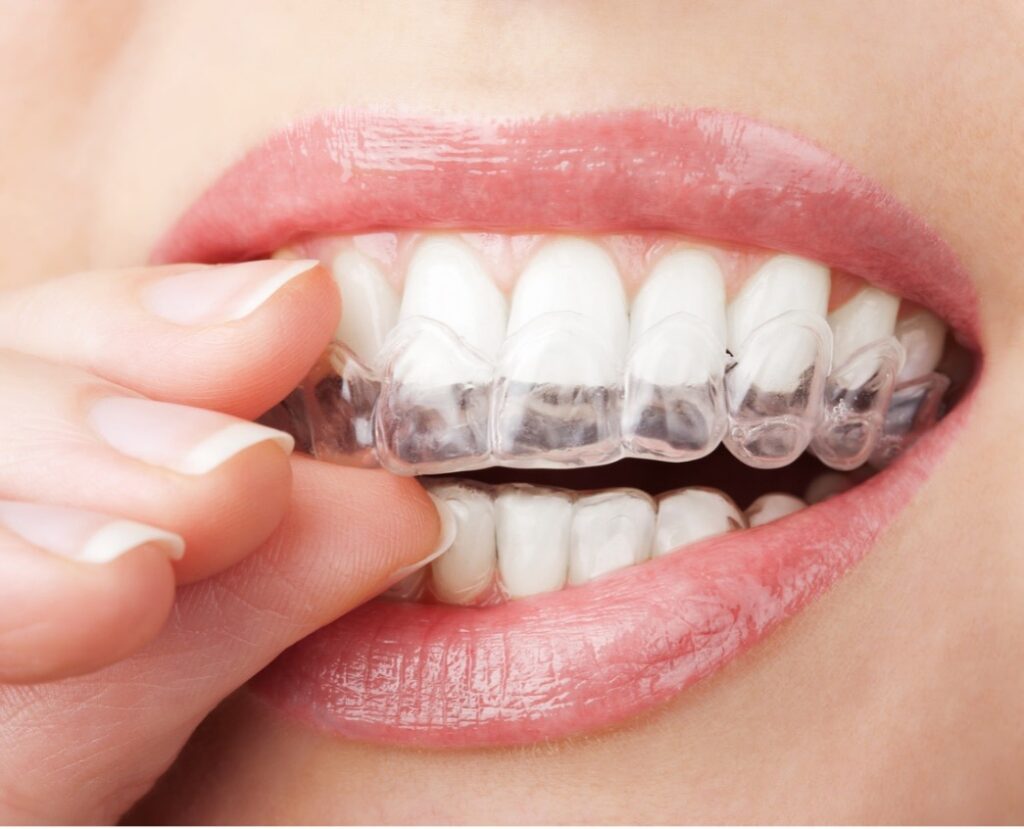So, you have decided to get your teeth straightened and have the smile you always dreamed of. Great decision! Not only will straight teeth enhance your appearance, but it also contributes to better oral health. Now, you must decide between Invisalign or braces.
In the good old days, you only had one choice – traditional braces. But in recent years, clear aligners such as Invisalign have emerged as a popular alternative. Some people talk about the “pros and cons” of braces and Invisalign. But that can give the idea that braces and Invisalign have negative aspects. I look at it this way – whichever you choose, it is a positive experience because you are doing something wonderful for yourself by straightening your teeth and getting the smile you have always wanted. Here are some basic features of braces and Invisalign to consider for your orthodontic treatment.
Braces

Traditional metal braces are the most common type and are more comfortable today than ever. Made of high-grade stainless steel, metal braces straighten your teeth using brackets and archwires. They come in different styles, like stainless steel and tooth-colored (transparent) ceramic. You can visit our website to learn more about the types of braces we offer.
Visibility:
Braces are visible in your mouth, but there are options like tooth-colored brackets or braces that go behind your teeth to make them less noticeable. You can also choose the color of the rubber bands that hold the braces together. For some ideas, see our blog Choosing the Colors for Your Braces.
Removability:
Once braces are put on your teeth, they stay there until the treatment is done. You can’t remove them on your own, but that means you won’t lose them accidentally.
Comfort:
When braces are first put on or adjusted, you might feel some discomfort, and the brackets and wires can irritate your mouth a bit. But don’t worry, the discomfort doesn’t last long, and you’ll get used to them over time.
Hygiene:
Keeping your teeth, gums, and braces clean is essential to prevent plaque and food from causing problems. Brushing and flossing regularly will help keep your teeth healthy during treatment.
Diet:
If you have braces, you’ll need to avoid hard, sticky, crunchy, and chewy foods to prevent damage to the braces. Also, choosing water over sugary drinks is better for protecting your teeth from acids and sugars causing cavities.
Invisalign (Clear Aligners)

Invisalign uses a series of invisible, removable, and comfortable acrylic (a type of plastic) trays that straighten your teeth like braces.
Visibility:
Invisalign aligners are almost invisible when you wear them, so you can straighten your teeth without drawing much attention. Sometimes, we may need to add tooth-colored attachments to help with the movement of your teeth, but these are hardly noticeable.
Removability:
You can remove your aligners, for example, when you eat or perform your daily hygiene. But for successful treatment, you must wear them for 20 hours a day.
Comfort:
Aligners have no metal to cause mouth soreness during treatment. When you switch to a new set of aligners (every one to two weeks), there might be some discomfort, but it’s usually not a big problem.
Hygiene:
Since aligners are removable, you can brush and floss as you usually would without aligners. But good hygiene is essential while wearing your aligners to keep your teeth healthy. After taking your aligners out of your mouth, for example to eat, you need to clean your teeth and aligners before putting them back in.
Diet:
Since you remove aligners when you eat and drink, you can eat and drink what you want while we straighten your teeth with aligners. While undergoing treatment, we strongly recommend avoiding sticky and chewy foods like chips, toffee, licorice, chewing gum, hard candy, and caramel. These snacks can easily get stuck between your teeth and aligners, making it challenging to maintain clean teeth and aligners even when thoroughly brushing. And you should limit sugary beverages as they can cause staining on the aligner trays over time.
Choosing What’s Right for You
Ultimately, the decision between braces and Invisalign comes down to your orthodontic needs, lifestyle, and personal preferences. Traditional braces might be the better option for more complex dental issues, while Invisalign offers a comfortable and discreet choice for those with mild to moderate misalignment.
The American Association of Orthodontists emphasizes, “The type of appliance used in orthodontic treatment is far less important than the skill in the hands of the person who is providing the treatment.” Orthodontists are experts in diagnosing and treating dental and facial irregularities and deeply understand the mechanics of tooth movement. It’s essential to consult with an orthodontist who can evaluate your oral condition and recommend the most appropriate treatment plan.
Whether you opt for braces’ time-tested reliability or Invisalign’s clear aligners’ subtlety, remember that both options have the same end goal: to give you the smile you’ve always dreamed of. A confident smile is a beautiful smile, no matter which path you choose to take. Embrace the journey of aligning your teeth, knowing that the result will be a smile that lights up the world. Contact Cobb Orthodontics for a free consultation.
Dr. Tripp Cobb
Cobb Orthodontics


0 Comments